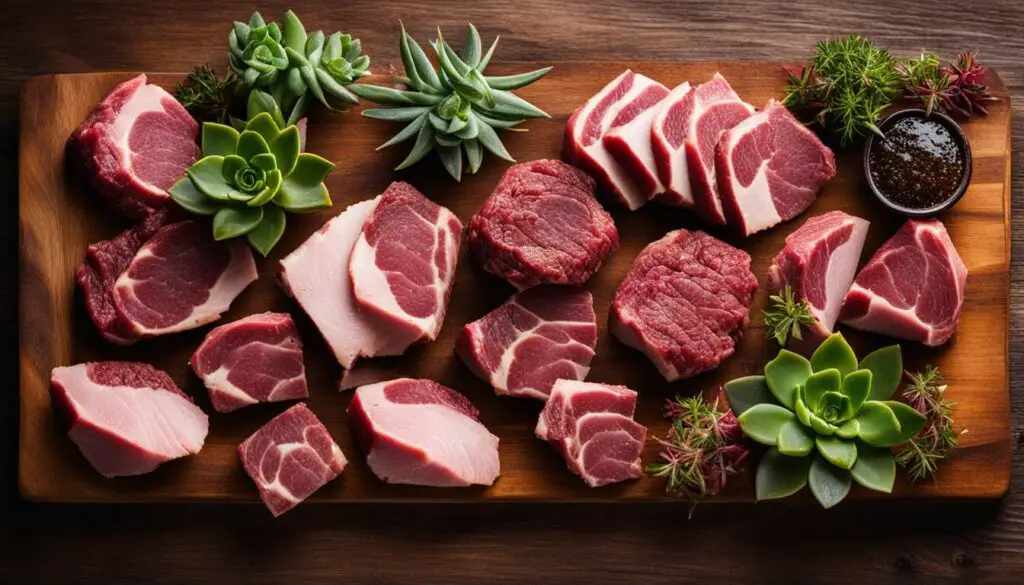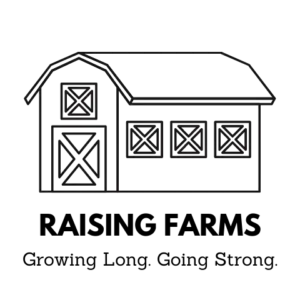When it comes to purchasing lamb, it’s important to know the average cost and factors that may affect pricing. Let’s explore the current prices of lamb and understand what contributes to the overall cost.
From lamb racks to leg of lamb, each cut has its own price range. The average cost of lamb can vary depending on the cut you choose. Factors such as the animal’s age and the type of processing involved can also influence pricing.
Keep in mind that lamb pricing is influenced by various factors, including supply and demand, location, and the type of market or butcher. It’s crucial to consider these factors to make an informed decision when purchasing lamb.
Curious about the average cost of lamb per pound? Stick with us as we delve into the details and help you navigate the world of lamb pricing.
Key Takeaways:
- The average cost of lamb varies depending on the cut and factors such as age and processing.
- Lamb pricing is influenced by supply and demand, location, and market conditions.
- Consider the cost per pound when comparing prices from different sources.
- The retail price of lamb can be subject to currency exchange rate fluctuations for imported varieties.
- Understanding these factors can help you make informed decisions and find the best value for your money.
Factors Affecting Lamb Cost
When considering the cost of lamb, it’s essential to understand the factors that can influence pricing. Several elements play a role in determining the cost of lamb, including:
- Age of the lamb: The age of the lamb at the time of slaughter can affect the tenderness and flavor of the meat. Generally, younger lambs tend to have a milder taste and command a higher price due to their tender meat.
- Cut of meat: Different cuts of lamb vary in price depending on their desirability and popularity. The more in-demand cuts, such as lamb chops or racks, are often priced higher compared to less sought-after cuts.
- Processing involved: The level of processing required for the lamb, such as deboning, trimming, or packaging, can also impact its cost. More extensive processing may increase the overall price of the lamb.
Aside from these factors directly related to the lamb itself, external influences can also contribute to variations in pricing:
- Supply and demand: The availability of lamb in the market and the demand for it can affect its cost. If there’s a shortage of lamb or increased demand, prices may be higher.
- Location: The geographical area where lamb is purchased can influence its price. Factors like transportation costs, local market dynamics, and regional preferences can all play a role in pricing variations.
- Type of market or butcher: The type of market or butcher from which lamb is sourced can impact pricing. Specialized gourmet butchers or high-end markets might have higher prices compared to more mainstream or wholesale suppliers.
Understanding these factors is crucial when making informed decisions about purchasing lamb. By considering the age, cut, and processing of the lamb, as well as the supply and demand, location, and market type, individuals can assess the fair pricing range for lamb and find the best options that align with their preferences and budget.
Quote:
“Being aware of the various factors influencing lamb cost empowers consumers to make informed choices while enjoying this flavorful meat.” – Chef Gabriella Torres
Average Cost of Lamb Cuts
The cost of lamb can vary depending on the cut you choose. Here is an average cost breakdown for common lamb cuts:
| Lamb Cut | Average Cost |
|---|---|
| Leg of Lamb | $12.99 per pound |
| Lamb Chops (Rib or Loin) | $15.99 per pound |
| Lamb Shoulder | $9.99 per pound |
| Lamb Shank | $7.99 per pound |
| Lamb Rack | $19.99 per pound |
| Ground Lamb | $8.99 per pound |
These prices are averages and may vary based on factors such as location, butcher, and market conditions. It’s always a good idea to check with local suppliers or online retailers to get the most accurate pricing for lamb cuts.

Comparison of Lamb Prices
The price of lamb can vary significantly depending on the source and location. It’s important to compare prices to ensure you’re getting the best value for your money. Here is a comparison of lamb prices from various sources:
| Source | Price Range |
|---|---|
| Local Butcher | $9.99 – $12.99 per pound |
| National Supermarket Chain | $8.99 – $11.99 per pound |
| Online Specialty Store | $13.99 – $16.99 per pound |
As you can see, there can be significant variations in lamb prices depending on where you choose to purchase it. It’s worth exploring different options and comparing prices to find the best deal for your budget.
Currency Exchange Rates and Lamb Costs
Currency exchange rates can have a significant impact on the cost of lamb. Fluctuations in currency values can directly influence the price of imported lamb, as it may be subject to exchange rate changes. Therefore, when purchasing lamb from overseas or imported sources, it’s worth considering the current exchange rates.
Exchange rate fluctuations can affect the overall cost of imported lamb in two ways. Firstly, if the value of the currency in which the lamb is priced weakens against the local currency, the cost of lamb will increase. This is because it will take more of the local currency to purchase the same amount of imported lamb.
On the other hand, if the currency in which the lamb is priced strengthens against the local currency, it can have a favorable impact on the cost of lamb. In this case, the cost of imported lamb may decrease as it will take less of the local currency to purchase the same quantity of lamb.

Therefore, keeping an eye on currency exchange rates can be beneficial when planning to buy lamb from overseas or imported sources. By monitoring and taking advantage of favorable exchange rates, you can potentially save on the cost of imported lamb.
Conclusion
After exploring the average cost of lamb and the factors that contribute to pricing, it becomes clear that there is no one-size-fits-all answer to the question, “How much does lamb cost?” The cost of lamb can vary greatly depending on factors such as the cut of meat, location, and market conditions.
When considering purchasing lamb, it is essential to take these factors into account and compare prices from different sources. This allows you to make an informed decision and ensure that you are getting the best value for your money.
Understanding the average cost of lamb and its influences on pricing empowers you as a consumer. By doing your research and considering the various factors, you can make knowledgeable choices when it comes to purchasing lamb, ensuring a satisfying and budget-friendly experience.
FAQ
How much does lamb cost?
The cost of lamb can vary depending on several factors, including the cut, location, and market conditions. It’s important to consider these factors and compare prices from different sources to ensure you’re getting the best value for your money.
What factors affect the cost of lamb?
Several factors can influence the cost of lamb, including the age of the lamb, the cut of meat, the processing involved, supply and demand, location, and the type of market or butcher.
What is the average cost of lamb cuts?
The average cost of lamb cuts can vary. Here is a breakdown of the average cost for common lamb cuts:
How do lamb prices compare from different sources and locations?
The price of lamb can vary depending on the source and location. For example, one source lists the following price ranges:
Can currency exchange rates impact the cost of lamb?
Yes, currency exchange rates can have an impact on the cost of lamb. Fluctuations in currency values can influence the price of imported lamb, as it may be subject to exchange rate changes. It’s worth considering the current exchange rates when purchasing lamb from overseas or imported sources.
What is the conclusion on lamb cost?
By understanding the average cost of lamb and the factors that influence pricing, you can make informed decisions when purchasing lamb.

